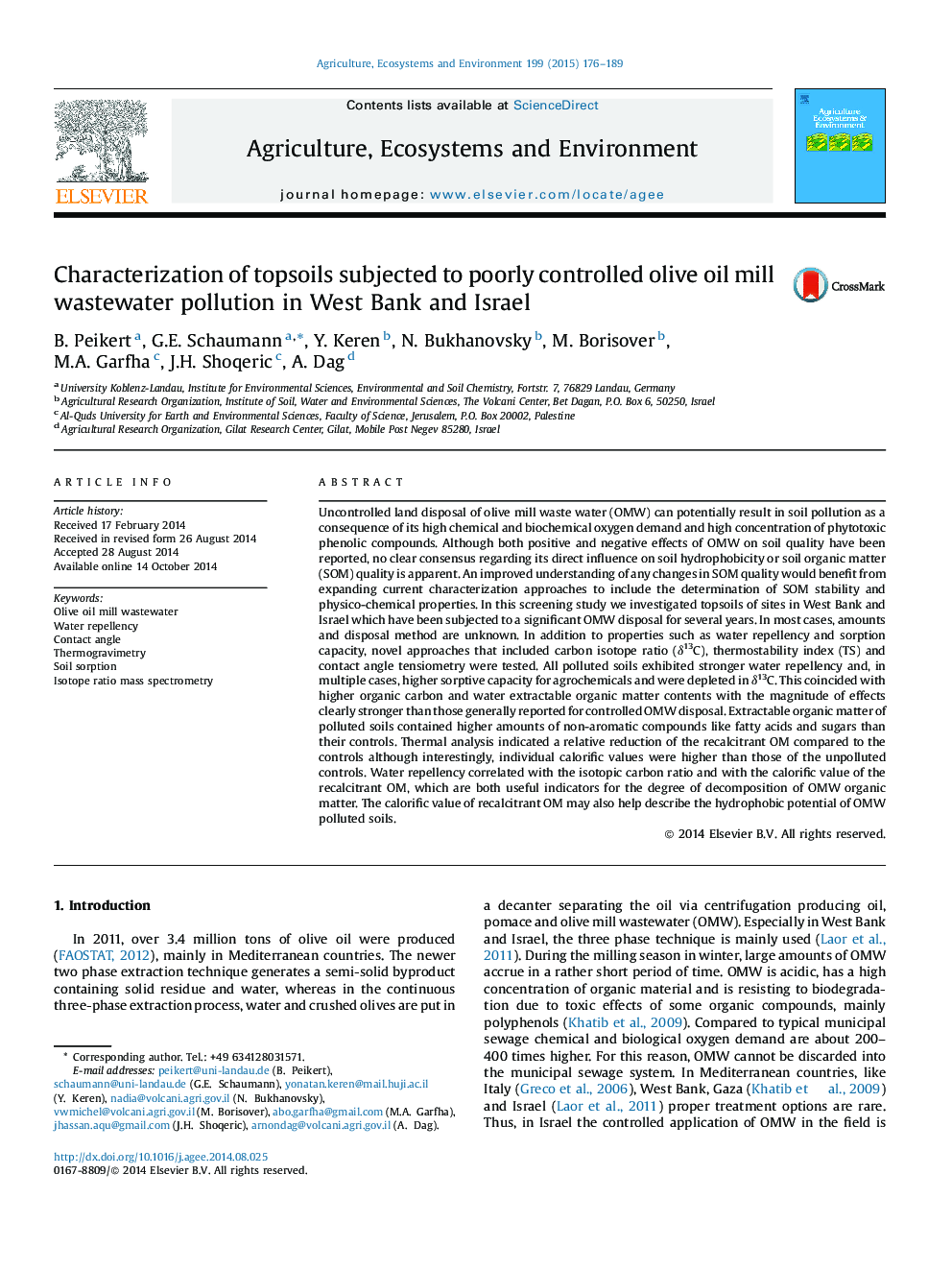| کد مقاله | کد نشریه | سال انتشار | مقاله انگلیسی | نسخه تمام متن |
|---|---|---|---|---|
| 2413856 | 1552053 | 2015 | 14 صفحه PDF | دانلود رایگان |
• OMW disposal changes SOM quality parameters: δ13C, thermal stability, sorption.
• Uncontrolled disposal shows more dramatic effects than current controlled disposal studies.
• The degree of OM degradation can be estimated from SOM quality parameters.
• Estimated degree of degradation correlates with soil water repellency.
Uncontrolled land disposal of olive mill waste water (OMW) can potentially result in soil pollution as a consequence of its high chemical and biochemical oxygen demand and high concentration of phytotoxic phenolic compounds. Although both positive and negative effects of OMW on soil quality have been reported, no clear consensus regarding its direct influence on soil hydrophobicity or soil organic matter (SOM) quality is apparent. An improved understanding of any changes in SOM quality would benefit from expanding current characterization approaches to include the determination of SOM stability and physico-chemical properties. In this screening study we investigated topsoils of sites in West Bank and Israel which have been subjected to a significant OMW disposal for several years. In most cases, amounts and disposal method are unknown. In addition to properties such as water repellency and sorption capacity, novel approaches that included carbon isotope ratio (δ13C), thermostability index (TS) and contact angle tensiometry were tested. All polluted soils exhibited stronger water repellency and, in multiple cases, higher sorptive capacity for agrochemicals and were depleted in δ13C. This coincided with higher organic carbon and water extractable organic matter contents with the magnitude of effects clearly stronger than those generally reported for controlled OMW disposal. Extractable organic matter of polluted soils contained higher amounts of non-aromatic compounds like fatty acids and sugars than their controls. Thermal analysis indicated a relative reduction of the recalcitrant OM compared to the controls although interestingly, individual calorific values were higher than those of the unpolluted controls. Water repellency correlated with the isotopic carbon ratio and with the calorific value of the recalcitrant OM, which are both useful indicators for the degree of decomposition of OMW organic matter. The calorific value of recalcitrant OM may also help describe the hydrophobic potential of OMW polluted soils.
Journal: Agriculture, Ecosystems & Environment - Volume 199, 1 January 2015, Pages 176–189
